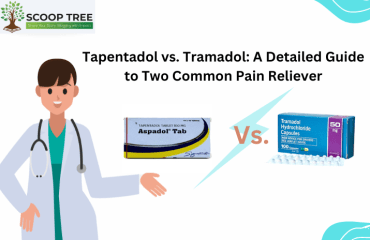Tapentadol and tramadol are opioid medications used to treat moderate severe pain. They share a mixed mechanism of action to relieve pain. Both medications act as mu-opioid agonists and norepinephrine reuptake inhibitors. However, the former is two times more potent than the latter and two times less potent than morphine. Here’s tapentadol vs. tramadol: a detailed guide to two common pain relievers.
The side effect profiles of both medications are similar, but tapentadol is less likely to cause nausea and vomiting. However, it may lead to long-term opioid adverse effects, such as abuse and respiratory depression. Compared to traditional opioids used for pain relief, these two pain relievers have a relatively favorable side effect profile and are reliable options for managing moderate to severe chronic pain.
Mechanisms of Action
Regarding mechanisms of action, both pain relievers exhibit a dual mode of action. These medications are synthetic opioid agonists that specifically target mu-opioid receptors to relieve various types of pain. They help block pain signals travelling up from the body and boost your body’s natural pain-relieving systems to further reduce the intensity of pain.
The pain-relieving effects of Tapentadol 100 mg rely on its generic form because it does not need any active metabolites. Even though the medication binds less strongly to opioid receptors, it still provides effective pain relief. It also combines the mechanisms of analgesic action in the same molecule. Overall, it is about twice as effective in pain relief.
On the other hand, tramadol requires an active metabolite form to provide pain relief, and it binds strongly to opioid receptors in the brain. However, it does not combine the mu-opioid receptor agonism and noradrenaline reuptake inhibition in the same molecule. Its analgesic effects mostly come from the inhibition of noradrenaline and serotonin.
Clinical Use
Both medications are used in the treatment of moderately severe acute and chronic pain that cannot be managed by non-opioid painkillers. In the USA, you can Buy Tapentadol 100mg Online by prescription to treat neuropathic pain associated with diabetes.
Tapentadol vs. Tramadol for Acute and Chronic Pain
Both are used in the treatment of
- Acute musculoskeletal pain
- Postoperative pain
- Chronic musculoskeletal pain
- Cancer pain (including Chemotherapy pain)
- Neuropathic pain
Tapentadol can be used to treat both acute and chronic lower back pain when NSAIDs or other painkillers cannot control the feeling of pain. It has fewer gastrointestinal side effects compared to Oxycodone and similar pain relievers. When used for nerve pain associated with diabetes and post-surgical pain, it offers potential benefits and is tolerated well by most patients.
Tramadol offers modest improvement in acute and chronic lower back pain, even though it is not a first-line treatment. It effectively relieves moderate to severe injury-related pain and post-operative pain. With the guidance of a healthcare professional, it can also manage diabetic neuropathic pain with short-term use. But, it may be less effective than morphine.
Dosages and Strengths
You can Order Tapentadol 100mg as a tablet or capsule and use it as prescribed by your doctor for effective pain relief. It is also available in 50mg, 150mg, 200mg, and 300mg strengths. The usual recommended dosage of the medication’s standard or immediate-release form ranges from 50mg to 100mg every 4-6 hours. For Tapentadol Extended-Release Forms, it is 100mg to 250mg every 12 hours. Do not take more than 500mg in a day.
When you compare Tapentadol vs.Tramadol dose, tramadol’s usual recommended dosage also ranges from 50mg to 100mg every 4-6 hours, if it is an immediate-release tablet. If you are prescribed extended-release tablets, remember, the maximum daily dose is 400mg. For effective and safe pain relief, you can take 100mg to 200mg every 12 hours or as prescribed by your doctor. Always follow the prescription.
Risk of Side Effects
Tapentadol vs.Tramadol side effects profiles are quite similar, as both of them are opioid pain relievers. While tapentadol is less likely to cause nausea, vomiting, and constipation compared to tramadol, it does carry a higher risk of respiratory depression. Therefore, both medications should be used with the same caution as strong opioid painkillers. On the other hand, using tramadol for a long period can result in serotonin syndrome.
Serious side effects associated with these two medications include;
- Hypoglycaemia
- Cardiac arrest
- Risk of dependency and abuse
- Increase in heart rate
- Spike in blood pressure
- Confusion
- Hallucinations
FAQs on Tapentadol vs. Tramadol: A Detailed Guide to Two Common Pain Relievers
Q. Tapentadol vs tramadol which is stronger?
Ans. According to clinical trials, tapentadol is a slightly stronger painkiller than tramadol. It is also two times more potent than other traditional opioids.
Q. Is tramadol good for nerve pain?
Ans. Yes. When used at effective doses, it can provide relief from diabetic nerve pain. The medication affects the opioid receptors in the CNS for enhanced analgesic effects.
Q. What is the purpose of opioid analgesics?
Ans. Opioid pain relievers directly affect the opioid receptors in the brain to change the perception of pain. They can be synthetic or natural.

